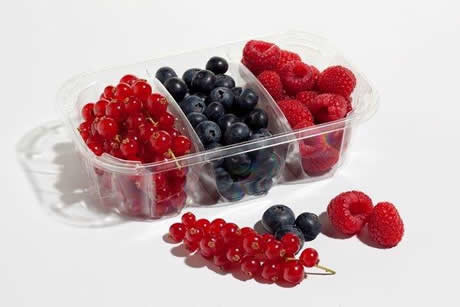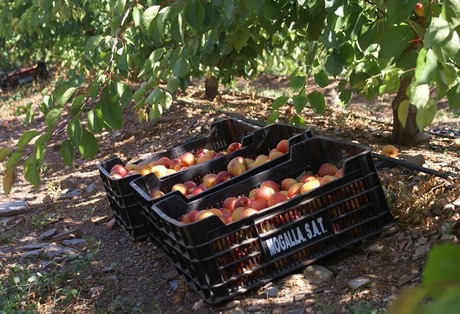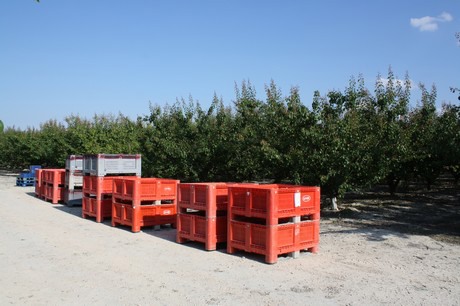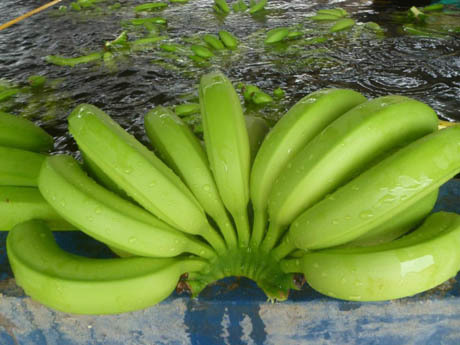
The weather didn't only have an affect on production, but also demand. According to Marcel van Lith from The Greenery, at the beginning of May, “Strawberry supply from Spain and Portugal is still fairly large. That creates some pressure, but retailers are willing to quickly switch to Dutch product at this time of year,” Van Lith says.
“Currently the weather is not helping the entire soft fruit sales in the Netherlands and elsewhere in Europe, but I expect that when a change in the weather occurs, both volume and demand will increase rapidly.”

The bad weather also delayed the start of the stonefruit campaign in several production areas in Spain, due to the lack of cold hours in the early spring.
"According to estimates on our farms, the production of the first varieties, such as the Mogador, Colorado, Luca and Megatea, should fall by between 30 and 40%. The midseason varieties, like the Flodea, Flopria and Latica, however, should reach the usual volumes, compared to previous years," explained Daniel Blanco, commercial director of Mogalla SAT.
Unfortunately, this wasn't entirely the case by the end of the month, when some of the main Spanish exporters were still facing some supply problems due to the drop in production caused by frosts in February and March.
"We hope this situation will continue for at least one more week," explains Joaquín Gómez, president of Apoexpa, adding that "although prices are still good, they do not reflect the current shortage."

The Southern Hemisphere also didn't escape the unusual weather conditions. It was reported that the citrus harvest in South Africa's Western Cape was running around a week early this season, which meant that they were starting their harvest at the same time as the Marblehall area in the north of the country, who were running two and a half weeks late.

Scandinavia: Strong push for 'grow your own'
According to a Nielson report last spring, fresh herb sales in Europe were up by 93% in the last period. On the back of this growth, which has also been witnessed in Scandinavian countries such as Sweden, herb and lettuce producer Spisa Smaker AB, (during a recent brand switch back in 2014) asked Swedish consumers what they found to be most important when buying fresh herbs, and they said that they prefer the company supplying the herbs to be Swedish, organic, locally grown, easy to find on the shelf and they also wanted to be inspired.

Danish company, Northern Greens, has also listened to consumers in the region and came up with the Kitchen Minis tomato plant, which received 2nd place for the Innovation award at Fruit Logistica Berlin 2016.
"We felt that the tomato plant fitted nicely into the recent healthy convenience food trend. It is trendy to grow your own food. A few years ago, a big car and a big apartment in the city were seen as status symbols, nowadays growing your own organic food and being about to cook a nice meal from it as well, is the new way to show status. It is not enough to serve something that you brought home from a restaurant." said Northern Greens Sales Director, Søren Terndrup Hansen.
Latin America
The world was hit with high banana prices after Colombia suffered the impact of drought and Costa Rica experienced heavy rains; causing a decline in production. On the back of the decreased supply, demand for Ecuadorian bananas grew sharply.

El Nino has really hit central and south American countries in the last few years, so much so that Maersk said in their first quarter 2016 trade update for Latin America on May 13th, that Latin American economies will be forced to compete more than ever with each other.
According to Omar Shamsie, President of Maersk Line Latin America and Caribbean: “With many countries competing in the same commodities, like bananas from Ecuador, Costa Rica and Colombia, or scrap metal and avocados out of Colombia and Mexico, it’s clear that the race is on. We have seen increased focus on, and investment in, exports in the region, including Colombia’s investment in avocado production to compete with its neighbours in international markets. This has been helped by investment in reefer container technology, which controls atmosphere and temperature, allowing produce to travel further than ever.”
